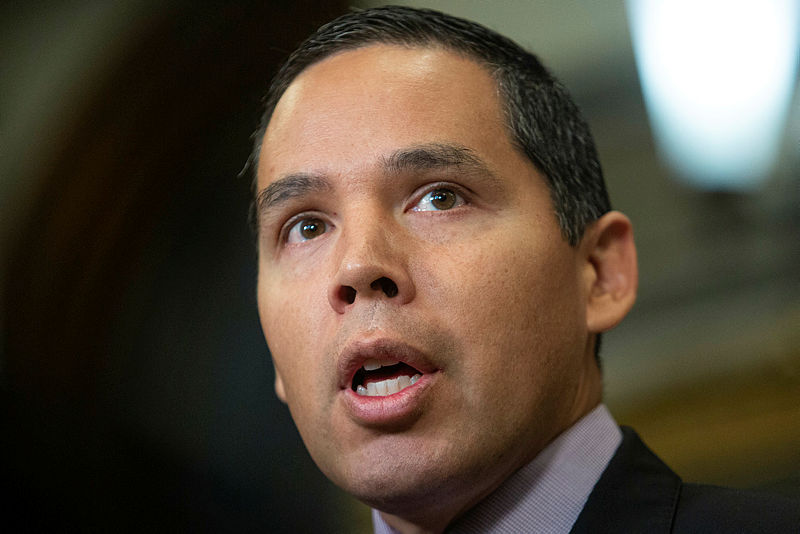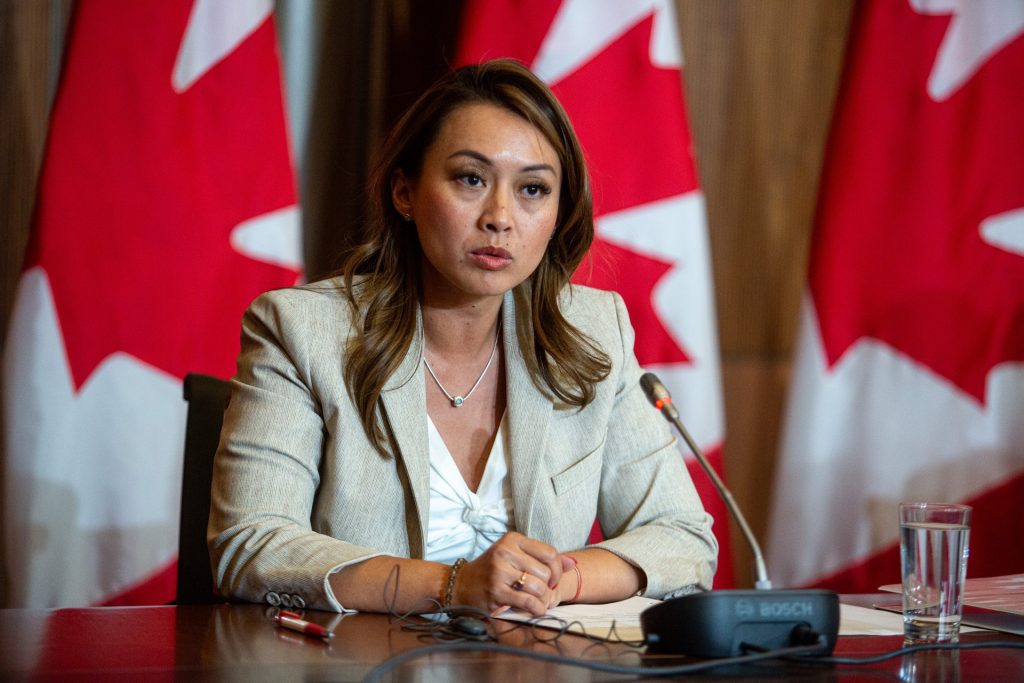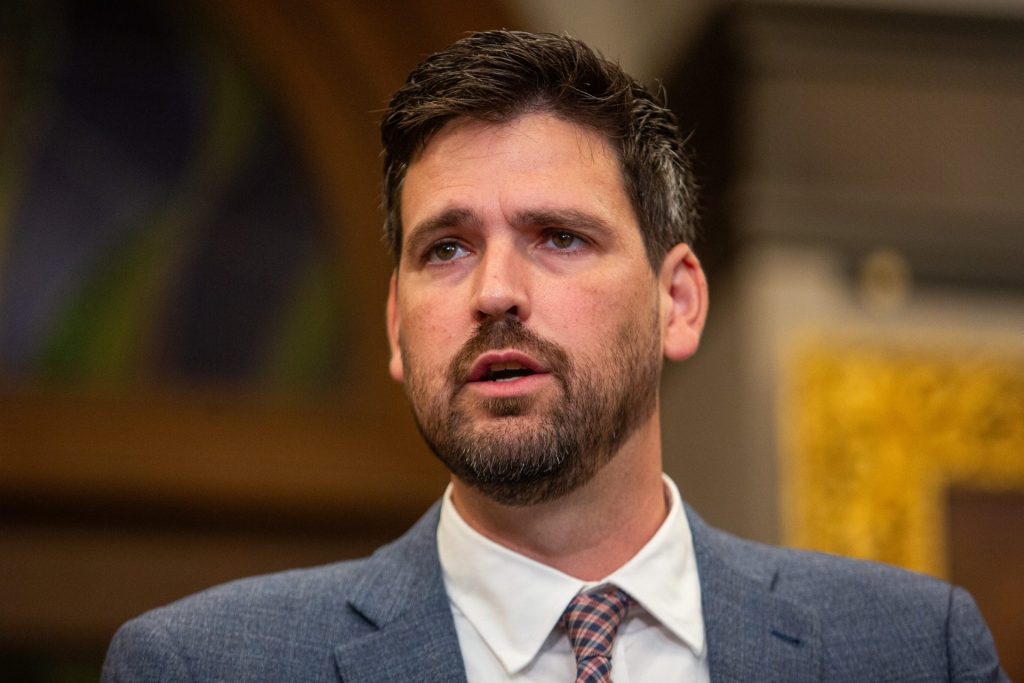Good Thursday morning,
Prime Minister MARK CARNEY and a collection of his cabinet ministers are meeting with Inuit leaders today in Inuvik, a town in the far northwest of the country’s Arctic.
The meeting is one of three that traditionally take place each year between federal and Inuit leaders via the Inuit-Crown Partnership Committee. NATAN OBED, the president of the Inuit Tapiriit Kanatami, will co-chair the meeting along with Carney.

DUANE SMITH, the chair and CEO of the Inuvialuit Regional Corporation, will be among the Inuit representatives taking part in the meeting, according to the Prime Minister’s Office.
Participating federal ministers include Finance Minister FRANÇOIS-PHILIPPE CHAMPAGNE, Natural Resources Minister TIM HODGSON, Housing and Infrastructure Minister GREGOR ROBERTSON, Crown-Indigenous Relations Minister REBECCA ALTY, Northern Affairs Minister REBECCA CHARTRAND, Defence Minister DAVID MCGUINTY, Indigenous Services Minister MANDY GULL-MASTY, and Foreign Minister ANITA ANAND, according to the PMO. Intergovernmental Affairs Minister DOMINIC LEBLANC may take part virtually as well.
It will be the first time that Carney has co-chaired an Inuit-Crown Partnership Committee meeting.
The theme of the meeting? You guessed it: Carney’s “major projects” law, and “how to implement it consistently with Inuit land claim agreements and in partnership with Inuit,” according to the PMO.
Obed’s ITK declined to comment in advance of the meeting.
With all of those heavy hitters gathered in Inuvik to talk infrastructure, Politics This Morning reached out to the mayor of Inuvik, PETER CLARKSON, to get his views on what kind of projects—major or otherwise—his town needs to fulfill its potential.
Clarkson isn’t an Inuit representative, so he won’t be in today’s meeting, but he was scheduled to connect yesterday with McGuinty, and on Friday with Chartrand and Alty, he said.
Inuvik is home to about 3,300 people, and provides services to another few thousand in surrounding communities. A big part of the reason it is getting so much federal attention, however, is what Clarkson called its “strategic location”—on the western edge of Canada’s high Arctic—and its airport.
Canada’s Air Force uses Inuvik as a landing and launch pad, giving it the ability to send fighter and surveillance aircraft into the Arctic Ocean if Chinese or Russian vessels or aircraft intrude into Canadian territory.
The feds announced in March that Inuvik had been selected as one of three “northern operational support hubs” for the military. The government is planning to pour $2.67-billion—albeit over 20 years—into facilities in those hubs.
Clarkson said he would be discussing the support hub project with McGuinty, to ensure the town is prepared to accommodate the Defence Department’s plans in the area.
He also said that Inuvik itself, and some of the infrastructure that supports it are in need of improvement. Turning the town into a military support hub will require more than just a beefed up airport.
Housing is in short supply in Inuvik, as in much of the Arctic. There are no real estate developers around to build it. Inuvik spends about $250,000 to service a new property lot before anything gets built on it, said Clarkson. The lots that Inuvik has developed in recent years have mostly been snapped up by Inuit government bodies, so more will have to be developed to accommodate newcomers.
A lot of the town’s infrastructure was built in the 1950s, on permafrost that is now melting, said Clarkson. It will need replacement, or at minimum expensive engineering work to remain functional. The Dempster Highway is also in bad shape, he said, and Inuvik relies on it for supplies of food and fuel.
“The town has to be sustainable,” said Clarkson.
Military Police in hot water
Members of Canada’s military police “brutalized” a civilian employee at Canadian Forces Base Montreal last year, dragging him by his clothes, throwing his papers on the ground, and leaving him outside in frigid weather, according to a complaint filed with the Military Police Complaints Commission.
The commission plans to hold a hearing to investigate the complaint, after the deputy Canadian Forces provost marshal declined to look into it.
The commission detailed the complaint and its decision in a press release yesterday. You can find the commission’s formal decision here.
What’s the rest of the cabinet up to?
Health Minister MARJORIE MICHEL will deliver remarks at a Black Ideas Grant 2.0 event in Montreal at 5:15 p.m.
In the news
More cuts: The federal Immigration Department is forecasting a 30 per cent spending cut by 2028. MARLO GLASS has the details.
Who you know: LAURA RYCKEWAERT tells us who is staffing Prime Minister Mark Carney in her latest Hill Climbers column.
Plan shows 81 per cent cut to Women and Gender Equality Canada’s budget by 2028
Today we are dissecting the 2025-26 departmental plan for Women and Gender Equality (WAGE) Canada.
The WAGE department is planning to see its spending cut by 81 per cent by 2027-28, and its staff reduced from 444 full-time equivalents in 2025-26 to 254 that year.
The department falls under Minister RECHIE VALDEZ.

The cuts to staff and budget aren’t truly set in ink just yet. The Carney government has yet to release its budget for the current fiscal year, so it’s possible that WAGE will receive more cash through that document.
Finance Minister François-Philippe Champagne has insisted that ministers aim for a 15 per cent budget cut over the next three years.
The reduction in spending— from $407-million in 2025-26 to $76-million in 2027-28— has been largely attributed to the ending of temporary funding for two major federal programs. The first is the implementation of the National Action Plan to End Gender-Based Violence, and the other is the 2SLGBTQI+ Community Capacity Fund.
The action plan was first announced in 2021, when the government earmarked $601-million over five years with an aim to make Canada free of gender-based violence.
In Budget 2022, the feds proposed an investment of $539-million over five years, starting in 2022–23, as transfer payments to provinces and territories to help them implement the 10-year plan. The federal government entered into bilateral agreements with the provincial and territorial governments to this end in 2023.
That funding for the plan will be sunsetting in 2027-28, and some are concerned about the program’s future.
Minister Valdez said during a recent summit of ministers responsible for the status of women in Yellowknife that she is committed to backing the National Action Plan, but did not say how much the government will be setting aside to fund the work.
Prime Minister Mark Carney’s election platform too reiterated the government’s support for the policy.
Politics This Morning enquired about the government’s funding plans for WAGE, and the minister’s office said “any funding decisions” will be communicated through “official government channels at the appropriate time.”
The prospects of WAGE potentially losing a major chunk of its funding has alarmed women’s organizations and policy experts, some of whom have played a direct role in the drafting of the National Action Plan.
AMANDA DALE, the lead author of Women’s Shelters Canada’s framework for the action plan, said it would be “hypocrisy” for the federal government to defund WAGE. She said Canada has “always played a lead” in holding other governments accountable for actions on gender-based violence.
ANURADHA DUGAL, now the executive director of Women’s Shelters Canada, was the co-chair of one of the working groups set up to build the four pillars of the plan. She labelled the cuts shown in the departmental plan as “extremely shocking” and “disproportional” for a small ministry like WAGE.
Women and people from queer communities are “essentially being abandoned” by the government, based on the figures in the plan, she said.
Grassroots organizations that get funding to execute the National Action Plan, she added, will not be able to maintain the level of service they need to fulfill the promises of the plan without additional cash.
The government called gender-based violence an “epidemic” in 2023 and said it had no place in Canada. But there continues to be an increasing number of murders of women in the country.
As per Statistics Canada, there were 28 more women homicide victims in 2024 than in 2023, with a large hike in the proportion of women killed by their spouse or partners— going up from 32 per cent in 2023 to 42 per cent in 2024.
KATHERINE SCOTT leads the Canadian Centre for Policy Alternatives’ gender equality work. She said that women’s organizations have been trying to get clarity from the government about its future funding plans for about a year.
“So clearly, this departmental plan would suggest that there are no renewals that have yet been planned or booked.”
She added that she isn’t “holding her breath” for the fall budget, but it will certainly indicate whether the government is committed to supporting gender equality.
“But it’s really clear that it’s being levelled. The level of support will be radically reduced.”
What else is happening today?
ADAM VAN KOEVERDEN, the secretary of state for sport, will meet virtually with his Northwest Territories counterpart, VINCE MCKAY, today.
What happened to the fall update?
As the feds carry out their budget consultations for 2025, we are diving into policy proposals made in the Fall Economic Statement 2024 (FES 2024), the fate of which is currently hanging in a limbo.
The Black Justice Strategy is one such example. Under prime minister JUSTIN TRUDEAU, the government earmarked nearly $78-million for the strategy over two years starting 2025-26.
The Hill Times’ STUART BENSON has given background on it here.
The funding was further split between different departments, with $24-million towards a range of justice-specific priorities like supporting “Black-specific court worker services, Black victims and survivors of crime and bail supervision programs for Black youth.”

The RCMP was set to be allocated $18-million to launch an “Anti-Racism Unit,” and for making “evidence-based improvements” to its practices to tackle the over-representation of Black people in the criminal justice system.
Nearly $17-million was to be given to Public Safety Canada to offer “community reintegration and corrections programming.”
The Justice Department’s plan for 2025-26 states that the government is intent on advancing the strategy, but it is not yet clear if the funding for it will match the numbers in FES 2024.
Senator PAULETTE SENIOR asked when that funding would be deployed in the Red Chamber on June 11. The government’s representative in the Senate at the time, now-retired senator MARC GOLD, said that the government was committed to the strategy, but he wasn’t aware of its funding plans.
Politics This Morning contacted the Justice Department to get some clarity. Spokesperson KATELYN MOORES said that more information on it will be shared “in the coming months.”
“Canada’s Black Justice Strategy is an important step to reduce the overrepresentation of Black people in the criminal justice system, including as victims and survivors of crime,” she said.
“The department does not have any additional information to communicate about the investments announced as part of the 2024 Fall Economic Statement at this time.”
Today’s data
This morning Statistics Canada will release new data on the retail trade, employment insurance, and more. You can find it here beginning at 8:30 a.m.
Yesterday StatsCan released a handful of new reports on subjects that may be of interest to Canada’s politicos and policy wonks. Among their findings:
- Canadians cut their travel to the U.S. dramatically this spring, with a 32 per cent year-over-year decrease in Canadian-resident return trips. U.S. resident trips to Canada fell by six per cent.
- Housing prices declined slightly in June, the third consecutive monthly decrease.
- A little more than 13 per cent of men worked in industries dependent on exporting to the U.S. in 2023-24—a proportion almost three times greater than for women.
- Canada’s “brain drain” to the U.S. has decreased in recent years.
- Among foreign nationals who came to Canada to study one of the STEM fields, Indians were much more likely to stick around after graduation (86 per cent) than those from China (56 per cent) or the U.S. (29 per cent).
We asked, you answered
FELIX HOLTMANN WAS THE MP
Former Mulroney-era Conservative MP FELIX HOLTMANN, a pig farmer from Manitoba, was the one who slammed the National Gallery of Canada’s acquisition in 1990 of BARNETT NEWMAN’s $1.8-million painting, Voice of Fire, saying: “It looks like two cans of pain and two rollers and about 10 minutes would do the trick.”

The 18-foot, massive vertical acrylic painting has one large red stripe down the middle, flanked by two blue stripes of paint down either side of the red. By 2014, it was estimated to be worth $40-million. Congrats to regular reader RON COLUCCI who was the first to answer correctly. Shout-outs to CHERYL LOADMAN and TANYA HORNUNG, too.
TODAY’S POLITICAL TRIVIA
Which former Senator owned Stollery’s, the once iconic menswear store, in Toronto? Please send your responses to trivia@hilltimes.com by NOON today, ET, and the winner’s name will be in tomorrow’s Politics This Morning along with the names of all other participants.
The Hill Times
